What Are the Worst Floods in History? Look Back at Catastrophic Flooding Events
Floods cause not only immense destruction but also many losses of life. What are the worst floods in history? This article is going to detail the top 10 worst floods around the world, ranging from the 1642 Kaifeng flood to the 1931 China flood. Besides, Weather365 discusses factors contributing to floods. Keep reading!
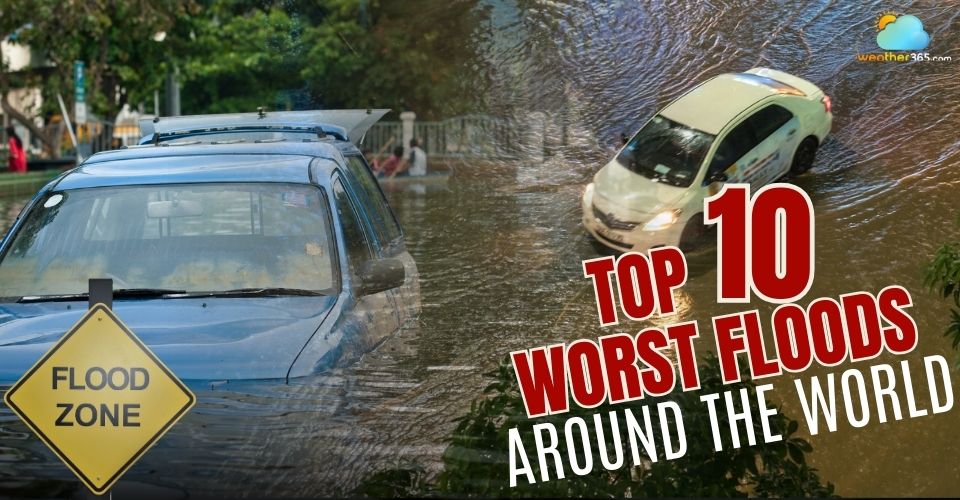
List of the worst floods in history
- 1931 China floods - The worst floods in history
- Other worst floods in history
- 1887 Yellow River flood ( Huang He)
- 1938 Yellow River flood ( Huang He)
- 1927 The Great Mississippi Flood
- 1970 Bhola cyclone
- 1642 Kaifeng flood
- 1975 Banquiao Dam failure
- 1900 Galveston Flood
- 1889 Johnstown Flood
- 2005 Hurricane Katrina
- What causes floods?
1931 China floods - The worst floods in history
The 1931 China floods, also known as the 1931 Yangtze–Huai River floods, rank among the deadliest natural disasters in history.
The floods occurred mainly from June to August 1931.
They were the result of a combination of factors, including a severe drought from 1928 to 1930, heavy snow and ice melt in early 1931, and unprecedented rainfall with multiple cyclones hitting central China.
In only July 1931, some weather stations reported over 600 mm (24 inches) of rain, causing rivers like the Yangtze and Huai to swell dramatically.
The flooding devastated central and eastern China, affecting approximately 25 to 53 million people.
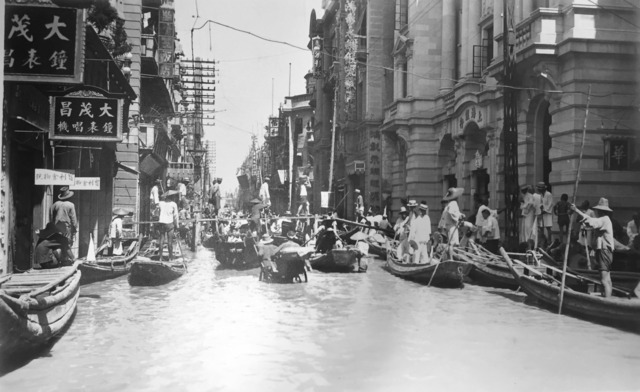
Sampans were used during the Wuhan flooding
Key cities such as Wuhan, Nanjing, and areas near Lake Gaoyou were severely impacted.
On August 25, 1931, a dike near Lake Gaoyou collapsed, releasing a massive surge of water that tragically claimed an estimated 200,000 lives overnight.
Chinese historians estimate around 422,000 deaths, while others believe the toll could be as high as 3.7 to 4 million people.
Many lives were lost during the floods, with additional fatalities in the following months due to severe food shortages and outbreaks of waterborne illnesses.
The floods destroyed about 15% of the wheat and rice crops in the Yangtze Valley, causing severe food shortages.
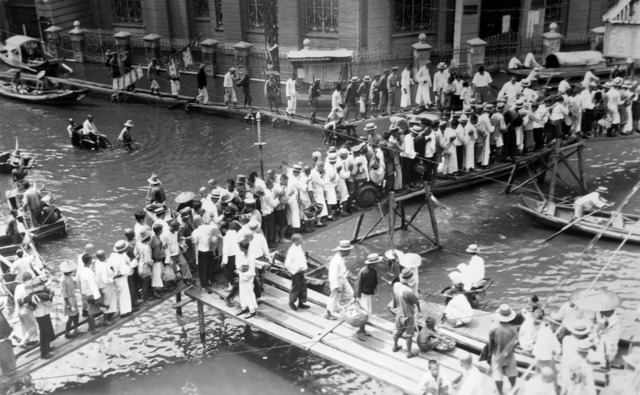
A temporary walkway was constructed for moving
The economic impact and mass displacement led to widespread hunger, with reports highlighting the extreme challenges survivors faced in finding food.
Overall, the 1931 floods remain a stark reminder of the catastrophic potential of extreme weather combined with environmental and infrastructural vulnerabilities.
Other worst floods in history
Let’s explore some of the most devastating floods in recorded history, including natural disasters driven by intense rainfall as well as human-made failures.
These events have led to extensive destruction and severe property damage across Asia, North America, and Europe.
|
Flood event |
Year |
Location |
Estimated death toll |
|
1887 Yellow River flood ( Huang He) |
1887 |
China |
900,000 - 2,000,000 |
|
1938 Yellow River flood ( Huang He) |
1938 |
China |
500,000 - 900,000 |
|
The Great Mississippi Flood |
1927 |
Mississippi |
700,000 |
|
1970 Bhola cyclone |
1970 |
Bangladesh |
300,000 - 500,000 |
|
1642 Kaifeng flood |
1642 |
China |
300,000 |
|
1975 Banquiao Dam failure |
1975 |
China |
85,000–240,000 |
|
Galveston Flood |
1990 |
Texas |
6,000 - 12,000 |
|
Johnstown Flood |
1889 |
Pennsylvania |
2,200 |
|
Hurricane Katrina |
2005 |
New Orleans |
1,800 |
1887 Yellow River flood ( Huang He)
The 1887 Yellow River Flood is considered one of the deadliest natural disasters in China’s history.
Beginning in late September 1887, heavy rains caused the Yellow River to breach its dikes near Huayuankou, Henan province.
This catastrophic flood rapidly inundated approximately 50,000 square miles (about 130,000 km²) of northern China, sweeping through agricultural lands and towns, including major population centers.
The flood left an estimated two million people homeless and caused a death toll ranging from 900,000 to 2 million due to drowning, starvation, and disease outbreaks that followed.
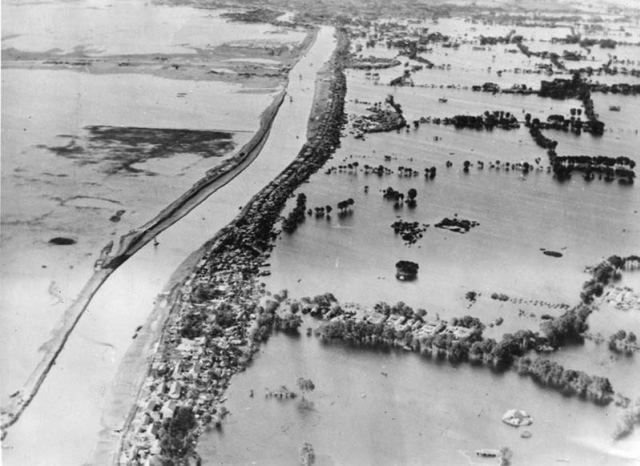
The Yellow River flood killed between 900.000 and 2 million people
1938 Yellow River flood ( Huang He)
The Yellow River Flood was a man-made disaster.
In June 1938, the Yellow River dikes were breached and causing massive flooding across Henan, Anhui, and Jiangsu provinces.
This action resulted in massive flooding across Henan, Anhui, and Jiangsu provinces.
It inundated millions of acres of farmland and forced around five million people to move by 1947.
The flood caused enormous human suffering and loss.
The drowning deaths range from 30,000 to 89,000, with total fatalities (including deaths from subsequent famine, disease, and plague) estimated between 400,000 and 500,000.
Some sources report up to nearly 900,000 deaths.
The flooding disrupted crucial railway lines and effectively blocked Japanese forces, but left vast areas uninhabitable for years due to extensive damage and silt deposits.
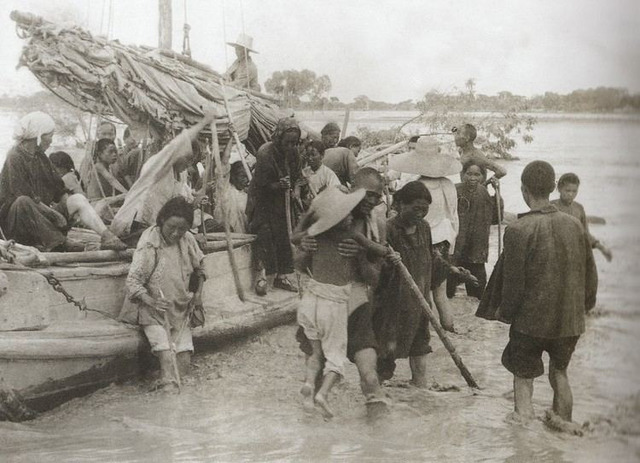
The Yellow River flood was a man-made disaster
1927 The Great Mississippi Flood
The Great Mississippi Flood of 1927 was one of the worst floods in US. history.
Torrential rains caused the Mississippi and Missouri Rivers to overflow, breaching levees and flooding about 27,000 square miles across multiple states.
Over half a million people were affected, with floodwaters reaching as far south as Louisiana. There were about 700,000 deaths.
The disaster exposed social inequalities and led to the 1928 Flood Control Act.
It initiated major flood management projects that shaped future U.S. flood response and infrastructure.
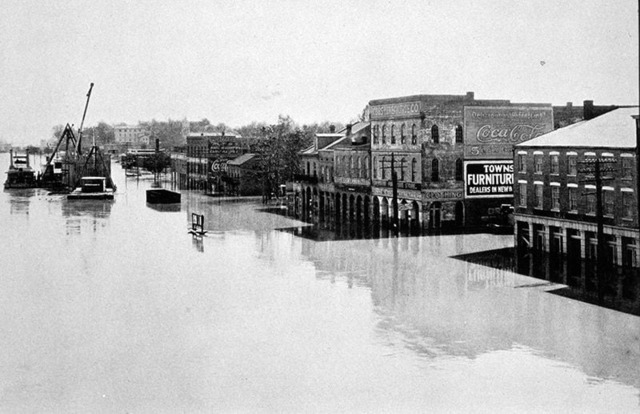
The Great Mississippi flood in 1927
1970 Bhola cyclone
The 1970 Bhola Cyclone struck East Pakistan (now Bangladesh) and West Bengal, India, on November 12, 1970.
It caused catastrophic flooding due to a massive storm surge that overwhelmed the low-lying islands of the Ganges Delta.
The cyclone killed an estimated 300,000 to 500,000 people, making it the deadliest tropical cyclone ever recorded.
The storm formed in the central Bay of Bengal, intensified rapidly, and made landfall with peak winds around 185 km/h (115 mph). It destroyed vast areas of farmland and fishing communities, leaving around 3.6 million people directly affected.
The government’s slow and inadequate response contributed to political tensions. Finally, it played a role in the independence movement of Bangladesh in 1971.
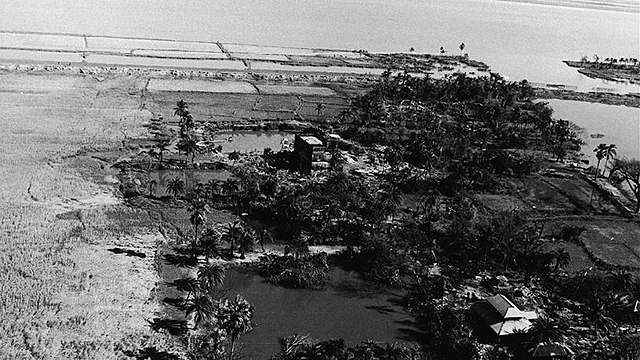
Bhola cyclone led to catastrophic floods in Pakistan and India
1642 Kaifeng flood
The 1642 Kaifeng Flood, also known as the 1642 Yellow River Flood, was one of the worst floods in history caused by humans.
During the late Ming dynasty, different parts of the dikes were breached simultaneously. Consequently, massive floodwaters unleashed and engulfed the city itself.
The flood caused immense loss of life in Kaifeng, with historical estimates suggesting that around 300,000 people perished during the disaster and its aftermath.
The flood also destroyed much of Kaifeng’s infrastructure and forced the city to be abandoned for two decades until it was rebuilt under Qing rule.
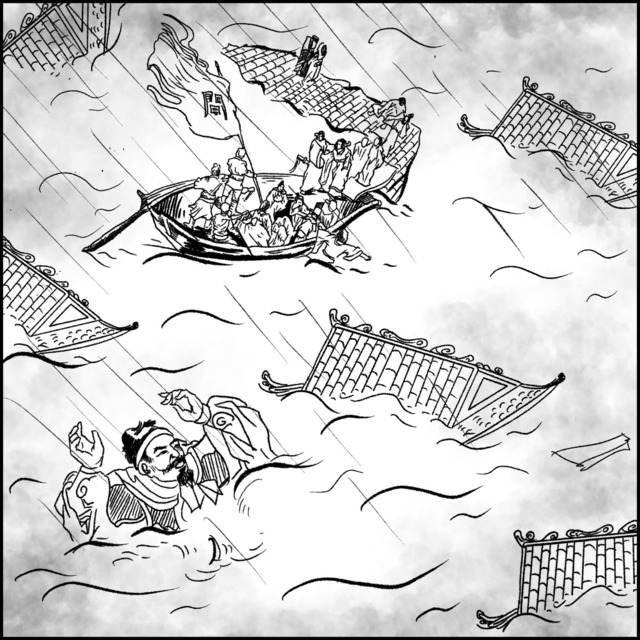
The 1642 Keifeng flood
1975 Banquiao Dam failure
In August 1975, Typhoon Nina unleashed extreme rainfall over Henan Province, causing the catastrophic failure of the Banqiao Dam along with dozens of others.
The floodwaters swept across the region and killed an estimated 85,000 - 240,000 people.
Poor planning, flawed dam design, and outdated infrastructure significantly contributed to the disaster.
From this disaster, people raised global awareness about the critical importance of dam safety and disaster preparedness.
This tragedy remains one of the deadliest dam-related floods in history and emphasizes the dangers of underestimating extreme weather events.
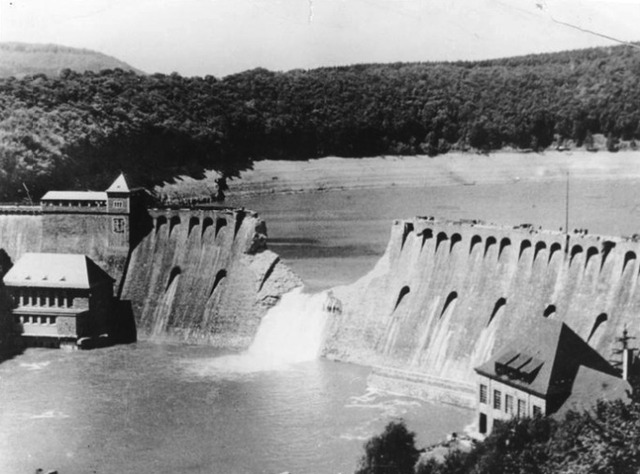
The Banquiao dam failure in 1975
1900 Galveston Flood
The 1900 Galveston Hurricane is a deadly natural disaster in U.S. history. It struck with category 4 winds and a massive storm surge up to 15 feet.
It flooded the city and killed an estimated 6,000 to 12,000 people and destroyed two-thirds of its buildings.
The devastation ended Galveston’s prominence as a major port, shifting economic focus to Houston.
In response, the city built a protective seawall and raised large parts of the island to prevent future flooding.
These engineering efforts remain key to Galveston’s hurricane defense today.
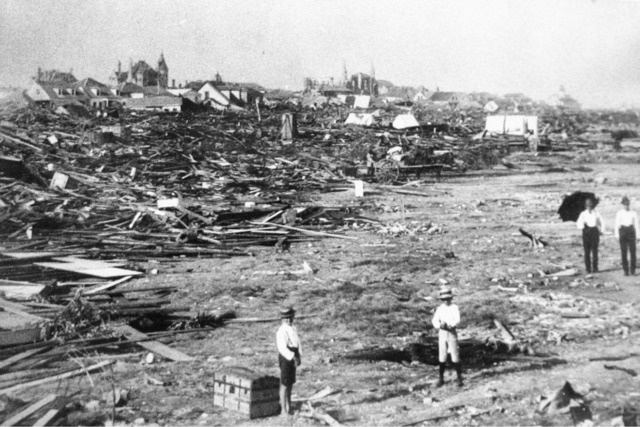
The devastating Galveston flood in 1900
1889 Johnstown Flood
On May 31, 1889, after several days of heavy rainfall, the South Fork Dam collapsed and unleashed approximately 20 million tons (18.1 million metric tons) of water.
This massive surge of water rushed downstream, devastating the town of Johnstown, Pennsylvania in a matter of minutes.
More than 2,200 lives were lost, and the event highlighted serious weaknesses in the dam’s original design, maintenance, and oversight.
The Johntown flood stands as a sobering example and underscores the critical importance of proper oversight, maintenance, and emergency preparedness.
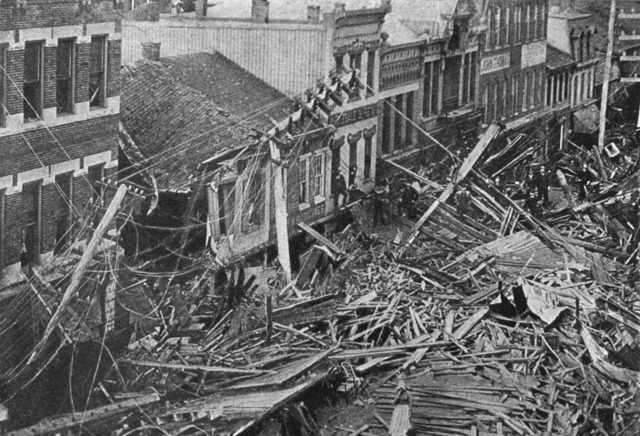
The catastrophic Johnstown flood in 1889
You may also like this: Where do most floods happen in the United States?
2005 Hurricane Katrina
Hurricane Katrina, which struck New Orleans and the Gulf Coast in late August 2005, is one of the most catastrophic natural disasters in modern U.S. history.
The storm surge from Category 3 Katrina overwhelmed the levees and caused them to breach in more than 50 locations.
The catastrophic flooding submerged approximately 80 percent of the city under up to 20 feet of water in places.
Tens of thousands of residents were displaced, with many facing difficult conditions due to limited access to shelter, food, and clean water.
More than 1,800 people died as a result of flooding and related challenges such as extreme heat and limited access to medical care.
Economically, Katrina caused estimated damages exceeding $125 billion, making it one of the costliest natural disasters in U.S. history.
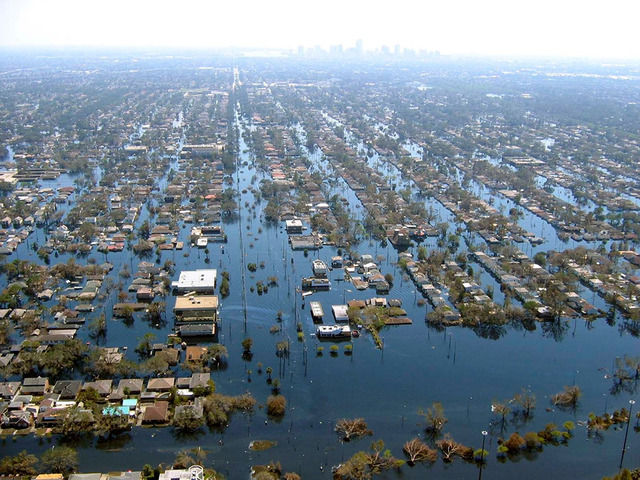
A catastrophic flood struck Louisiana in 2005
What causes floods?
What are the causes for floods? Not always due to natural factors.
Floods are caused by a variety of natural and human-related factors.
The most common natural cause is heavy or prolonged rainfall, which saturates the soil and leads to water overflowing into rivers, lakes, and floodplains.
Rapid melting of snow and ice can also contribute by adding excess water to rivers. In coastal areas, storm surges caused by hurricanes or tropical storms push seawater inland, flooding low-lying regions.
Additionally, dam or levee failures can unleash large volumes of water suddenly.
Human activities such as urbanization, deforestation, and poor drainage systems worsen flooding by reducing the land’s ability to absorb water, causing more surface runoff.
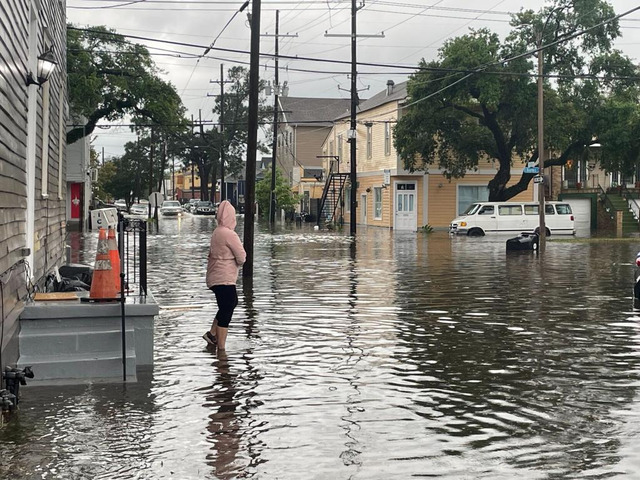
Causes of flooding
Conclusion
The worst floods in history have left profound marks on communities around the world. These floods emphasize nature’s immense power and show weak points in infrastructure and preparedness. Looking back at these tragic events is essential in improving flood management, disaster response, and resilience for the future. From that, we can better protect lives and property from the catastrophic impacts of flooding.
Frequently Asked Questions (FAQs)
Related post
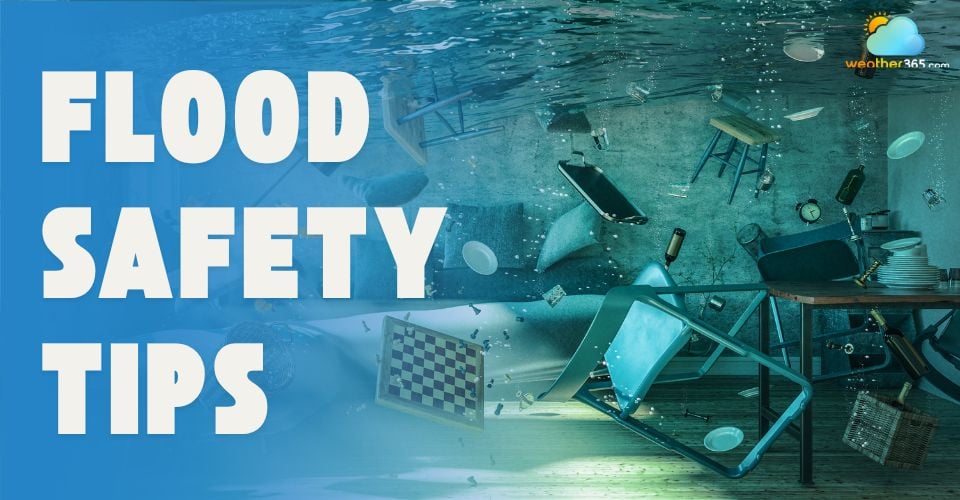
Flood safety tips: DOs and DON'Ts you should know to protect your family
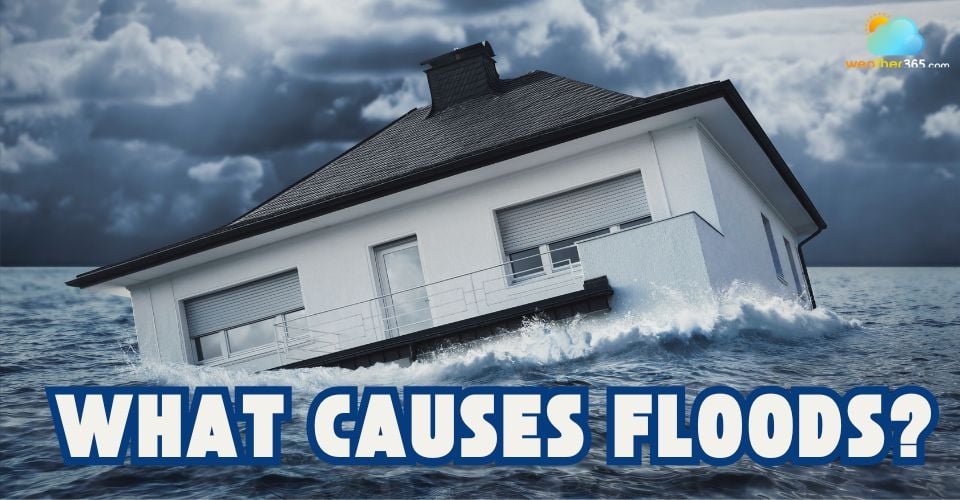

0 Comment
Leave a comment
Your email address will not be published. Required fields are marked *